.png)

.png)
For over 40 years, the data shared by engines with the user has been quite consistent: evaluation, depth, main line. Consider the Apple ][ program, Sargon III. Released in 1983 by Dan and Kathe Spracklen, here is what its output looked like:

Now let's fast forward to today and Chessbase 16:

Aside from the time and node counts, it is essentially the same information. Sure, the strength and accuracy of that output has improved a thousandfold, but the type of the data has not. Or rather had not, until Chessbase 17.
To get the most information, you will want to be sure you are in single-line mode and no scrolling of the main line.

The key is this friendly button that looks like a rescue dog. Click on it.

You will immediately see a new pane of engine data, and notice the number of CPU threads the engine was using reduced by one. This is because a second instance of the engine will open and it will be using that one core.
Its purpose is to take that mindboggling long line and annotate it. Normally engines used to be the equivalent of a black box. You knew it was right, but trying to make sense of that long line was nothing short of intimidating.
Note: The assortment of features presented by the Buddy Engine work for all engines and not just Powerfritz 18.
You will want to expand the size of the engine pane in order to allow it to display all the goodies in store for you.
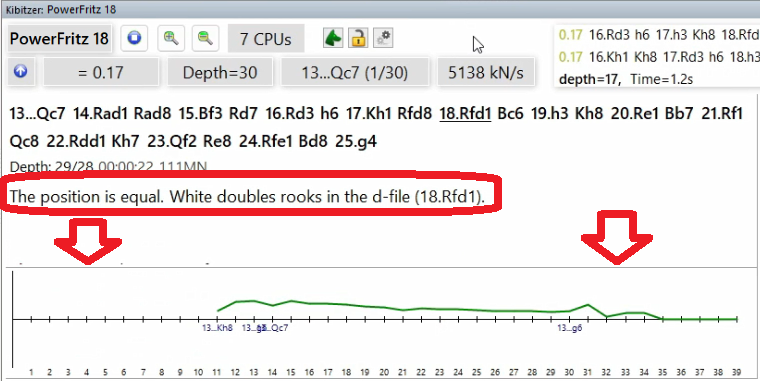
Let's start with the graph. This is not a graph of the moves played, but rather the main line itself as the Buddy Engine evaluates it. In between it and the main line you will see an ever growing list of comments in text.
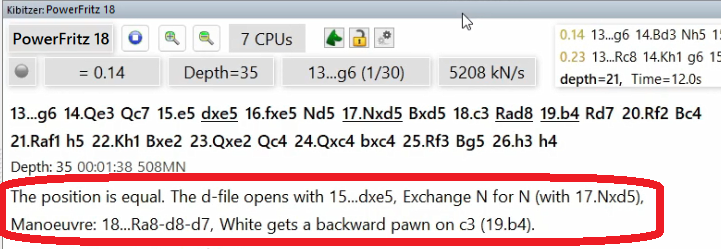
Above it states, "The d-file opens with 15. dxe5" Except the game is not at move 15, it is still at move 13. This comment is on the 15. dxe5 from the engine's line. The other comments also apply to this. You will notice several moves underlined. Each time you see that, it means there is a text description corresponding to that move.

Another cool feature is that the Buddy Engine will now tell you when there are reasonable alternatives such as another move of near equal or equal strength. Above we can see it is saying that aside from its choice of 14...Rad8 down the road, it thinks 14...h6 is good too. When the mouse hovers over it, as noted in the previous article on Chessbase 17 engine features, the board will turn opaque and show the move on the board.
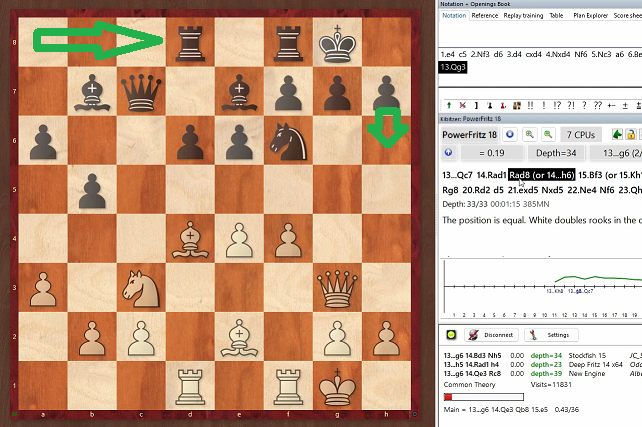
Above it shows the suggested 14...Rad8 but you can also visualize the alternative 14...h6 easily enough.
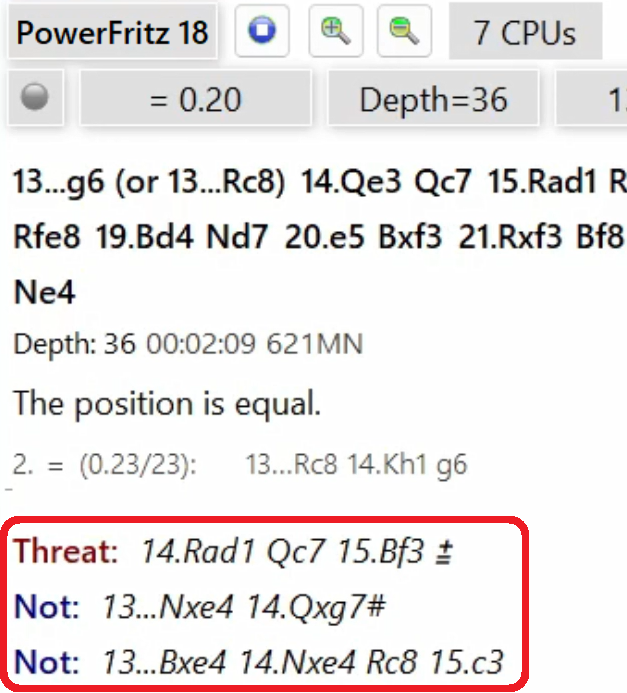
If you further expand the engine pane, it will also display the main threat it perceives, as well as moves to avoid at all costs and why.

Finally, in time it will annotate some of the moves with colored squares, always in two colors. The square represents a forced move just as in standard chess notation, except that now it is colored.
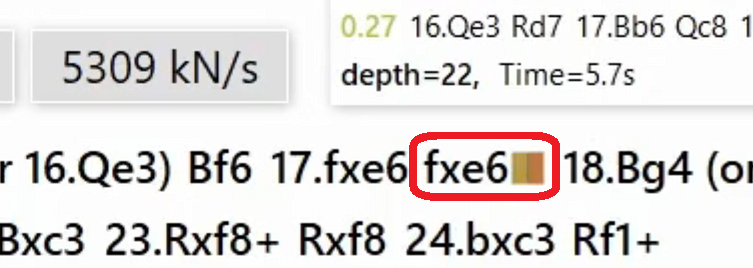
When you see one with two colors side by side, these are the evaluations of both the move displayed in the main line and the second best move, which is not shown. The square also shows the evaluation of that second move through the color. Green means it leads to an advantage, yellow would mean it is roughly equal and red would mean losing.
Since the second move shows a dark brown/orange, it means the main move is forced and the second move is very bad. Many forced moves can spell trouble since if it is not played the position can quickly collapse.
A vertical split means the best move is trivial though, so while not playing 17...fxe6 will likely lose, it is an easy move to find according to the Buddy Engine.

On the other hand, a diagonal from left top to right bottom, as above, means it is not quite trivial, but it is still easy to find. If you see one with a diagonal from left bottom to top right, then the move appears later in the search, and would be judged harder to find.
As you can see Chessbase 17 now empowers your engine to give you a wealth of information, transforming this:

into this:
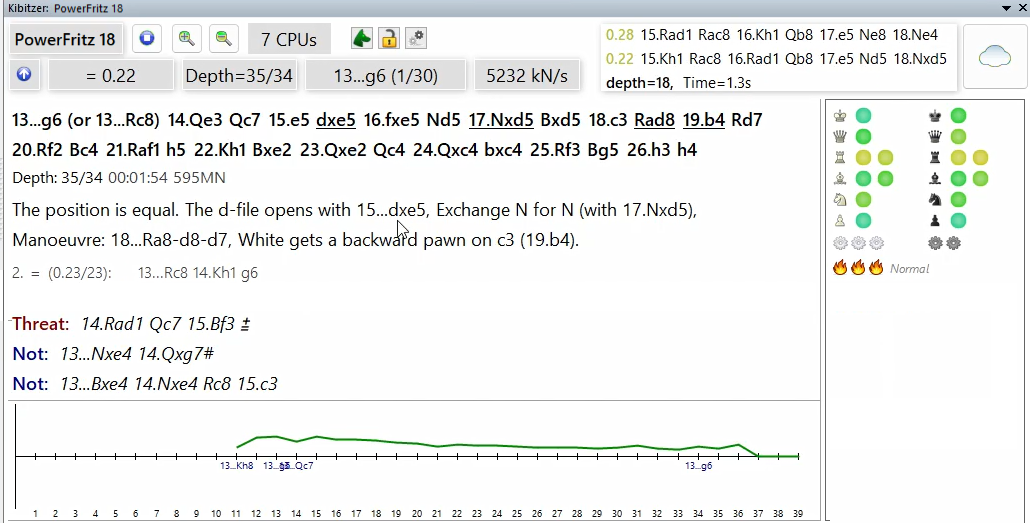
You can purchase the Chessbase 17 Mega Package in the Shop
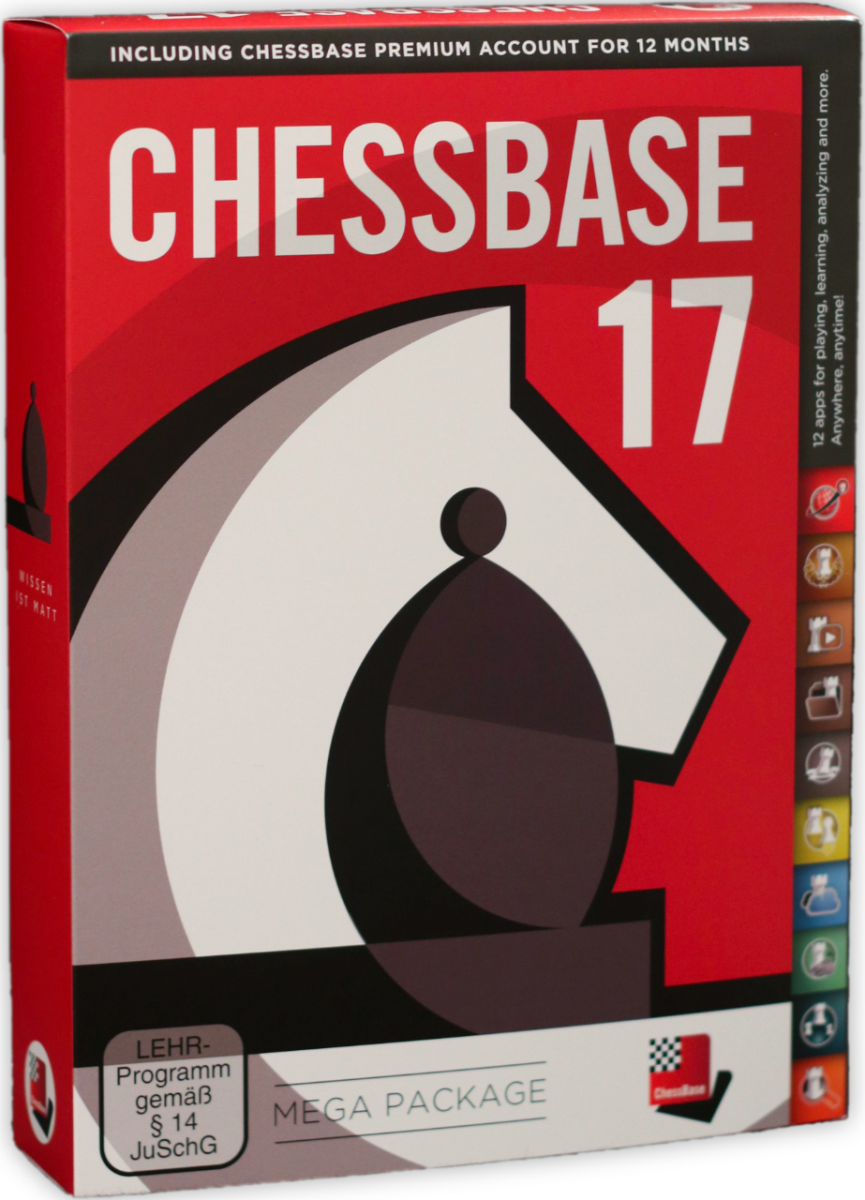
It includes
Links